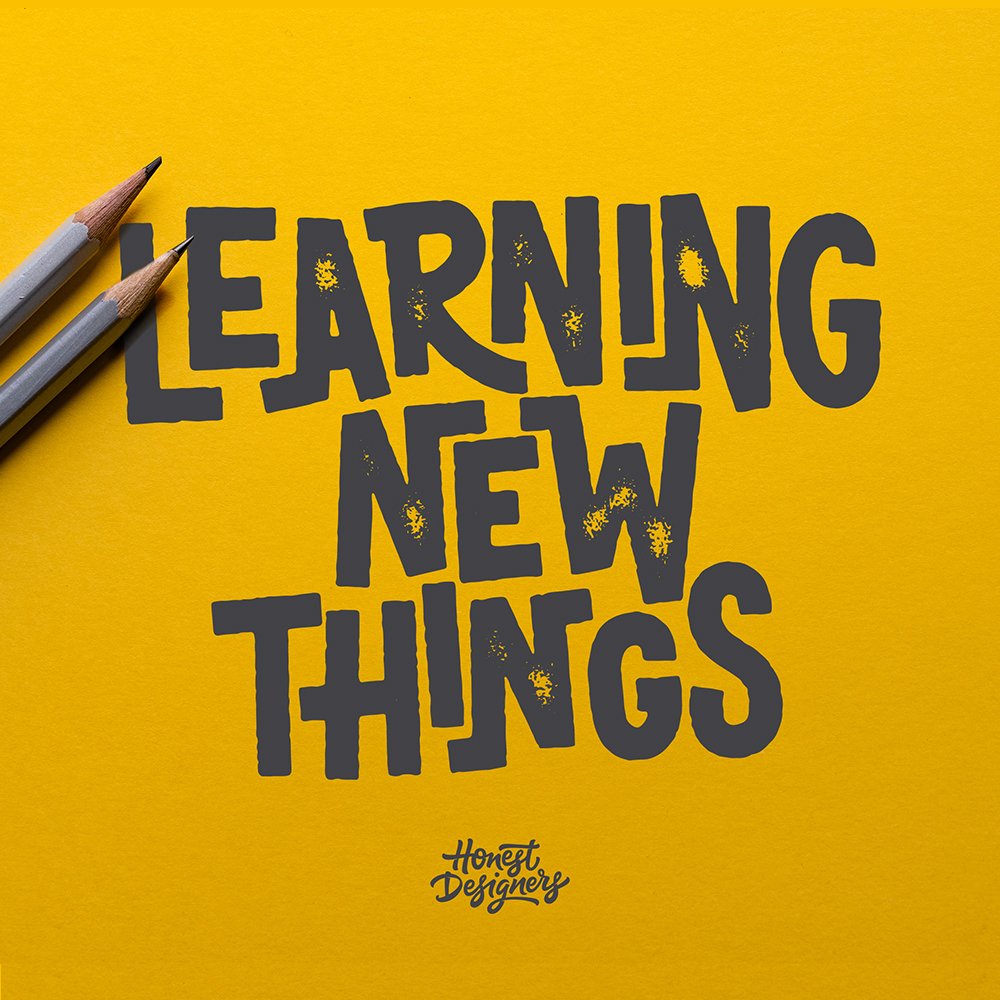In this week’s episode we chat all about how to hire if you’re working in the creative industry. So many of our listeners are looking to start growing their creative businesses beyond themselves, and whether you’re looking to build a team or just to delegate some of those jobs that don’t inspire you so much, this episode is a guide on how to do it. We also help our very own Lisa Glanz with her fear of delegation and try to work around the problems she currently is struggling with in growing her operation beyond just herself.
[smart_track_player url=”http://traffic.libsyn.com/honestdesigners/HD_39.mp3?dest-id=468740″ social=”true” social_twitter=”true” social_facebook=”true” social_gplus=”true” title=”Episode 39: Hiring in the Creative Industry”]
Show Notes for This Episode:
[1:00] This week we’re talking all about hiring and delegating
[1:45] The hosts have different levels of experience when it comes to hiring
[2:15] Dustin started by himself and then hired a virtual assistant working for 10h a week, then moved on to a more skilled person on a 20h contract, and then later to a 40h contractor and also hires freelancers for one off projects
[3:00] Ian also started on his own and sometimes outsources his work, such as using a designer for creating the previews for his typefaces and other products
[4:00] He hasn’t hired any people or virtual assistants
[4:20] Lisa has hired while working as a graphic designer and art director and since she’s been a full-time illustrator has hired a designer to help with a bit of Photoshop work
[5:15] She doesn’t have a problem with hiring but thinks she’s not very good a training and admits she is a bit of a “control freak’
[6:00] Ian and Lisa have very unique styles and it’s a bit difficult to hire people to do their work
[6:40] This came much easier for Dustin as his business is more of a general brand
[7:10] The hosts aim to find a solution for Lisa’s hiring problems
[7:30] While working on his blog Tom used to outsource some of his work
[7:45] Now at Design Cuts, Tom works with a team of 10 people and around 6 freelancers and had to also hire 2 temps to help
[8:00] Tom has learned everything through trial and error
[8:30] Now with four years of experience he sees things in a different light
[9:00] You should hire someone, if you can afford it financially, as this is generally the only way to grow
[9:30] It is a huge stress relief being able to pass some of the more mechanical work to someone else
[9:50] Dustin hired to relieve the stress of having to deal with the emails
[10:20] Tom constantly had his phone with him, checked emails while he was away with friends and has only been able to move away from emails in the last 10 months
[12:00] Ian doesn’t have to deal with many emails coming in and doesn’t feel the stress as much while on holidays
[13:00] He felt more pressured while doing webdesign work
[13:45] He also does more of his social media posts on the day and is not very good at planning the posts before hand
[14:30] The ‘spare of the moment’ posts end up being his most popular
[15:20] Dustin mentions the book “Principles” in which the author talks about the concept of triangulation
[15:45] You can find fresh ideas for your business by talking to two people with opposing thoughts than yourself
[16:20] Applying the triangulation concept to his business, led Dustin to launching a “The I want it all box” which was a mix of digital and a physical product
[17:00] The hosts cover the benefits of hiring: e.g. being able to go on a holiday
[17:40] Tom suggests Lisa should get someone to help her convert the illustrations into digital products
[18:10] Lisa fears that she doesn’t have enough of this type of work to give to a freelancer
[18:40] She worries that there won’t be anyone interested in the work she needs done, as they will need to do a little bit of everything
[19:20] Part of being a designer is communicating to people via email
[19:50] Most new designers dream of getting a job doing admin and learning from an established designer
[20:20] Lisa doesn’t want to feel responsible for the person’s living and worries if she will have enough work for them
[21:20] Tom got in touch with Allie, a designer recommended by Dustin, to do some freelance design work for Design Cuts and both Tom and Allie are very pleased with the arrangement
[22:00] As a young designer, Tom would have loved to work for a company like Design Cuts
[22:40] Ian recommends Lisa first starts a relationship with a designer that is flexible
[23:10] Ian works with a designer who has a daily job but helps him with work in her spare time
[23:40] Dustin also worried about being responsible for another person when he first hired
[24:30] Tom thinks that Lisa needs to change her mindset, and think she is doing something positive and helping that person
[25:00] He also thinks if the relationship works, she will end up giving them more work
[25:30] Tom thinks Lisa will be consistent and have plenty of work and emails
[26:00] Once you’re one step through the door, the work will gradually increase
[26:40] Dustin believes that Lisa could get products out faster if she had some help
[27:15] Another reason that stops Lisa from hiring is the worry that she will have enough time to teach and train someone to do the job
[28:00] Ian uses Dustin’s example and suggests giving the new person the ropes of the trade and then sending them away for a period to learn the job
[28:40] Tom might consider implementing this at Design Cuts
[29:10] When you don’t have the time to learn a new skill, the new person will come in useful as they could learn it, and use this skill for your business
[29:40] This will either free you time to launch new products or learn something new
[30:30] Famous designers like Charles Schulz and Walt Disney, also started alone and now their companies employ a lot of designers to replicate their work
[31:30] Tom’s suggestion to Lisa is pick a job that she doesn’t like doing and hire someone to do this job
[32:10] If everyone insisted on doing every job themselves, there will be no industry and unemployment would be high
[32:40] Dustin thinks Lisa should spread the word on social that she is looking to hire, and she will get a huge interest from the audience
[33:20] Working with a freelancer or a team also gives you a nice feeling of companionship
[34:00] Lisa wonders how the training works for a person who works remotely
[34:30] There is a job for everyone and people enjoy doing a lot of different things
[36:00] Tom gives the example of hiring Lizzy and explains how hard this was as it required a lot of different skills
[37:00] Tom finds that now Lizzy is doing a better job than he did, as he was spreading himself too thin
[37:30] You need to put out a job description, listing the skills required and you will be surprised that you can find someone who is interested and can actually do the job
[38:15] If you’re interested in working for Lisa, please let us know
[38:40] The biggest benefit of hiring and delegating your work is what you can do with your available time
[39:15] Lisa has about 20 products in her mind, and she doesn’t know when she will be able to launch them
[39:50] Hiring is possible and there are so many benefits to it
[40:10] Ian suggests having a trial period, and Tom suggests doing a half day trial as part of the interview. This is something he started doing at Design Cuts recently
[40:40] This is great way of seeing how the person is on the job and makes it easier to decide who to hire from the shortlist
[41:40] Dustin found the trial period a good way of finding what the person is good or not good at doing the job
[42:30] He thinks it is important to adjust to the things the person’s good at and their wins
[43:10] Tom has allowed employees to implement some of the things their interested in into the role and made this work
[43:30] Dustin found the more people he works with the richer the business gets
[44:00] You will have a pool of people with lots of ideas but will still be able to retain control and have the final say
[44:30] Lisa wonders how did the other hosts feel about allowing someone else’s design aesthetics to represent the company
[45:00] Dustin believes the employees will acclimate to the designer’s style
[45:30] Ian looks at the style the audience is looking for
[46:00] At the beginning there will be many rounds of feedback
[46:50] Lisa has a lot to take in from all the information the other hosts provided
[47:20] Ian reiterates that Lisa just needs to give it a try with one hire
[48:00] Lisa admits she had a very bad experience with firing someone
[49:00] The law in South Africa makes it harder to fire someone and Lisa has struggled with it for a long time
[49:50] This is likely one of the reasons Lisa is so reserved about hiring now
[50:30] Firing someone is the worst part of any job
[51:30] If and when you’re firing someone think that you’re also protecting the business and your other employees
[52:00] Tom suggests it’s better to do it earlier – the longer you leave it the harder it will get
[53:00] It’s also good to be vigilant and see early on if the person is a good fit for the company
[53:40] The hosts decide to feature a whole episode on managing and training the new employee and Dustin also suggests covering the topic of project management
[54:30] Lisa promised her husband that she will hire someone in the new year
[55:20] If the need and opportunity to hire comes along, take advantage of it
[55:40] The benefits and the good experiences will definitely top the bad ones
[56:00] “If you continually find out you’re putting of the same job, you should definitely delegate it” – Tom Ross
[57:00] Thank you all for listening to this week’s episode
“A must for every creative freelancer (or those aspiring to freelance). Thank you for being so… honest! Such a wealth of information from people I admire who have ‘been there and done that’. Listening to the podcast every week feels like I’m among friends. Can’t wait for more episodes!” – AG_GD






Be the first to comment